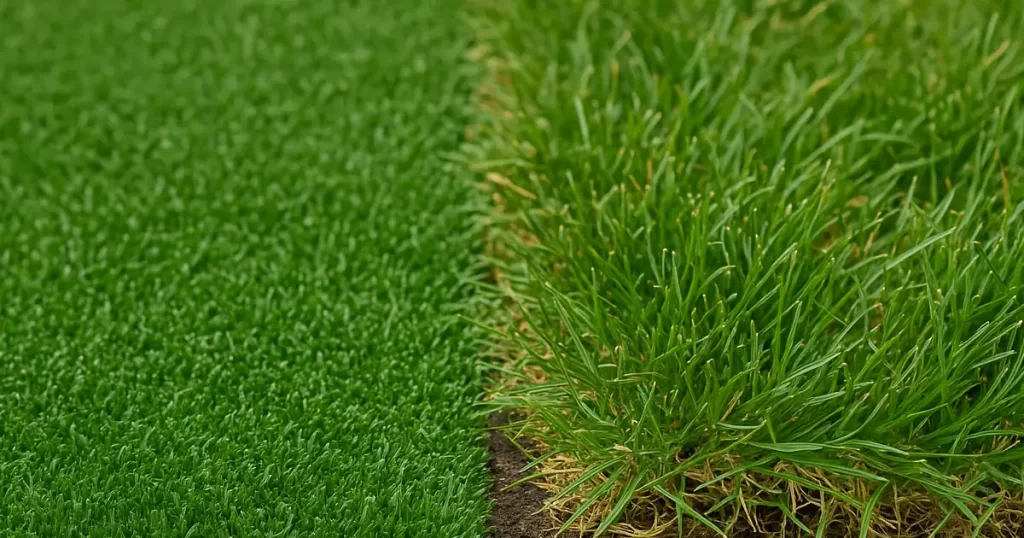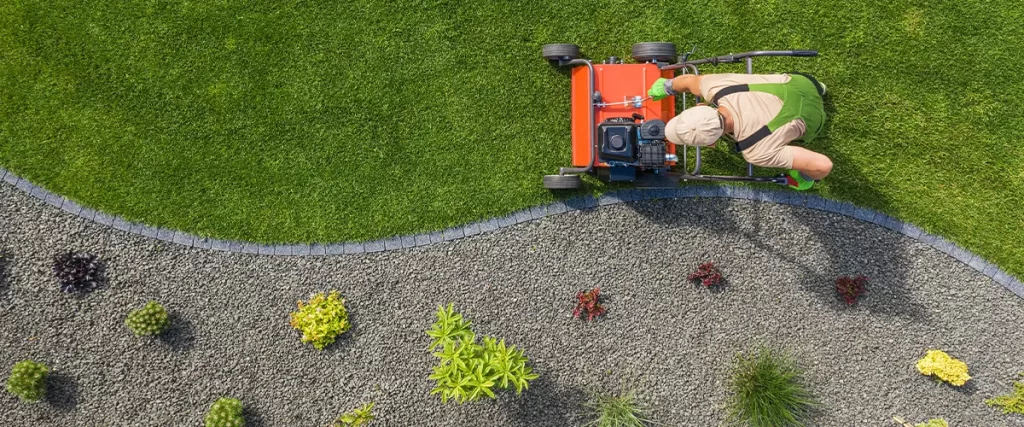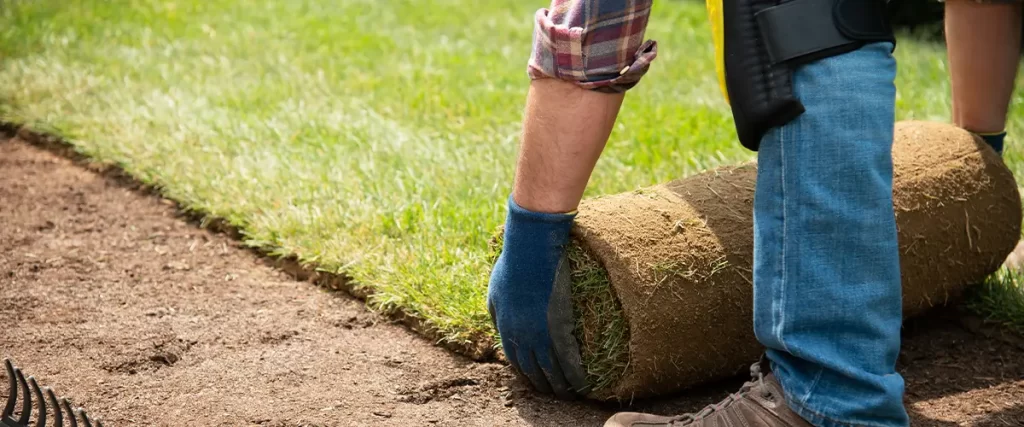
When deciding between artificial turf vs grass, most homeowners in Central Florida are torn between appearance, maintenance, and long-term practicality. Both options can create a beautiful yard, but the real difference lies in how they perform in Florida’s hot, humid climate and how much work they demand to stay that way.
Understanding the Difference: Turf vs Grass
The term artificial turf usually refers to the rugged version used for sports fields, playgrounds, and high-traffic areas. It has shorter fibers and is built for durability. Artificial grass, on the other hand, is softer and made to look like real lawn grass, often used in residential landscapes and commercial properties.
Most artificial lawns today use polyethylene or nylon fibers with sand or rubber infill to keep the blades upright. High-quality versions blend several shades of green and brown to mimic the natural look of St. Augustine or Bermuda grass, both common in Florida yards.
Performance and Durability
Florida lawns face harsh sunlight, heavy rain, and year-round use. That’s where the performance difference between artificial turf and natural grass really shows.
Artificial Turf – Built for Consistency
- Long-lasting: Quality turf systems can last 10 to 20 years with minimal upkeep.
- Weatherproof: It stays green and usable through Florida’s rainy summers and dry spells without turning muddy or patchy.
- Low-maintenance: No mowing, edging, or watering. Just occasional brushing and rinsing to keep it fresh.
- Always ready: Perfect for play, gatherings, or pets. The surface stays consistent no matter the season.
Natural Grass – Beautiful but Demanding
- High maintenance: Requires regular mowing, fertilizing, and watering to stay healthy.
- Easily damaged: Heavy rain or foot traffic can leave bare spots, ruts, or uneven areas.
- Weather-sensitive: Grass often browns out during heat waves and can take weeks to recover after storms.
For Central Florida homeowners who value convenience and reliability, turf’s durability and low upkeep make it a practical upgrade. Especially in areas that get constant use or struggle with poor drainage.

Safety and Comfort Considerations
For families or pet owners, comfort and safety matter as much as looks.
Natural grass provides a softer, cooler surface and reduces impact during play. Artificial turf, while level and slip-resistant, tends to heat up quickly under Florida’s sun. Surface temperatures can exceed 140°F on a summer afternoon. Installing shade structures, using light-colored infill, or hosing the turf down can help reduce heat buildup.
When installed correctly, modern turf systems include shock pads and improved drainage layers that make them safe and comfortable for kids and pets. Still, for bare feet or long hours outdoors, natural grass remains more comfortable during peak heat.
Environmental Factors
The environmental side of the artificial turf vs grass debate is especially relevant in Central Florida, where water conservation and chemical runoff are ongoing challenges.
Artificial Turf – Water-Wise but Synthetic
- Saves water: Synthetic lawns drastically cut household water use, a major benefit in areas with irrigation limits.
- No fertilizers or pesticides: Reduces harmful runoff into lakes and waterways.
- Drawbacks: Made from plastics that aren’t biodegradable. Some products may contain PFAS or other non-recyclable materials.
- Heat buildup: Artificial surfaces can become much hotter than natural grass under the Florida sun.
Natural Grass – Eco-Friendly but Resource-Heavy
- Supports the environment: Cools the air, filters dust, and supports pollinators and soil life.
- High water demand: A healthy lawn can require thousands of gallons per month, especially in summer.
- Chemical use: Fertilizers, herbicides, and pesticides are often needed to maintain growth and color.
- Maintenance emissions: Gas-powered mowers and trimmers add to the carbon footprint.
In short, artificial turf helps reduce water and chemical use, making it an eco-conscious choice for drought-prone areas. But natural grass still leads in natural cooling, oxygen production, and supporting local ecosystems.cooling and ecological value.

Cost Comparison: Short-Term vs Long-Term
Here’s where many homeowners make their final decision.
Installation Costs
- Artificial Turf: Typically costs $8 to $12 per square foot installed. A 1,000 sq. ft. yard costs roughly $10,000 to $12,000 upfront, depending on the type of turf and base preparation required.
- Natural Grass (sod): Around $3.50 to $5.50 per square foot, or roughly $4,000 to $5,500 for the same area including irrigation setup.
- Natural Grass (seed): The most affordable option at about $2,000 to $3,000 with sprinklers, but it takes months to fully establish and requires heavy watering during early growth.
Maintenance Over Time
Over 10 to 15 years, turf’s higher upfront cost pays off. You’ll save on water bills, lawn services, and equipment. Natural grass, though cheaper to install, typically costs much more to maintain long term once you add up mowing, irrigation, fertilizer, and pest control.
| Category | Artificial Turf | Natural Grass |
|---|---|---|
| Upfront Cost | High | Low |
| Water Use | Minimal | High |
| Maintenance Cost (10 yrs) | Low | Very High |
| Lifespan | 10–20 years | Continuous upkeep |
| Total Long-Term Cost | Lower overall | Higher overall |
For homeowners focused on long-term savings and low maintenance, artificial turf is the more cost-effective investment.
Health and Safety Concerns: What to Know Before You Decide
Recent research shows that artificial turf can get extremely hot, potentially affecting surface safety during peak sun hours. Some early turf systems were found to contain heavy metals or chemical compounds. Today, many manufacturers use non-toxic, lead-free materials and improved cooling technology, making modern turf much safer.
Still, natural grass remains the more eco-balanced option. It’s biodegradable, supports local soil health, and doesn’t contribute to plastic waste. For those concerned about sustainability, hybrid options, like partially turfed play areas combined with native grass sections, can offer a practical middle ground.

Which Is Better for Central Florida Homes?
The best choice depends on your priorities.
If you want a natural, breathable yard that supports the local ecosystem and stays cooler underfoot, grass remains ideal. Especially if you don’t mind ongoing maintenance.
But if you want a clean, green space that looks perfect year-round without the mowing and watering, artificial turf is a smart long-term choice for Florida’s climate. It handles the rain, sun, and humidity far better than most traditional lawns and helps homeowners cut down on water bills.
Final Verdict: The Smarter Choice for Central Florida Living
Both surfaces can deliver a beautiful yard, but artificial turf offers unmatched practicality in Florida’s demanding environment. With modern designs that look strikingly natural and require almost no upkeep, synthetic lawns have become a realistic upgrade for homeowners tired of watering and mowing in 90-degree weather.
Still, for those who enjoy the smell of fresh-cut grass, cooler surfaces, and natural texture, traditional lawns hold timeless appeal.
If your goal is to create a low-maintenance, year-round green space that fits the Central Florida lifestyle, artificial turf may be the smarter, more sustainable investment in the long run.
At Site Pros Landscaping, Inc., our artificial turf installation service helps homeowners across Winter Springs, Casselberry, Longwood, and nearby areas enjoy a lush, durable lawn that looks perfect every day of the year.
Whether you want to replace patchy grass or design a clean, pet-friendly backyard, our team can make it happen. Start a conversation with us today or call (407) 480-0713 to plan your turf project.
